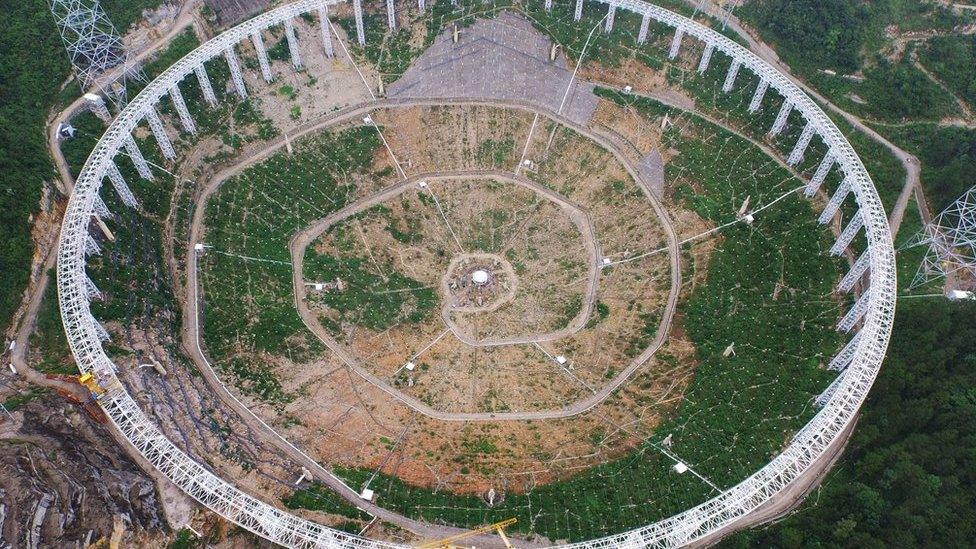China fits final piece on world's largest radio telescope
- Published

The $180m (£135m) satellite project will be used to explore space and help in looking for extraterrestrial life, said state media outlet Xinhua
China has fitted the final piece on what will be the world's largest radio telescope, due to begin operations in September, state media report.
The 500m-wide Aperture Spherical Telescope, or FAST, is the size of 30 football fields.
The $180m (£135m) satellite project will be used to explore space and help look for extraterrestrial life, Xinhua news agency, external reported.
Advancing China's space program remains a key priority for Beijing.
Rebecca Morelle takes a close up tour of China's new Five-hundred-metre Aperture Spherical Telescope - or Fast for short
Scientists are now due to start debugging and trials of the telescope, Zheng Xiaonian, deputy head of the National Astronomical Observation under the Chinese Academy of Sciences told Xinhua.

What will the telescope do?
Survey neutral hydrogen in distant galaxies and detect faint pulsars (highly magnetised balls of neutrons)
More than 2,000 pulsars so far said to have been detected
Improve the chances of detecting low frequency gravitational waves
Help in the search for extraterrestrial life
Sources: Xinhua, South China Morning Post

FAST will replace the Arecibo Observatory in Puerto Rico, which is around 300m (984ft) in diameter, as the world's largest telescope.

Scientists are now due to start debugging and trials of the telescope, which took about five years to build
China has stated that its space program has peaceful purposes, but the US Defence Department has said it was pursuing activities aimed to "prevent adversaries from using space-based assets in a crisis," reported news agency Reuters.
Beijing is due to launch a "core module" for its first space station in 2018.
- Published16 February 2016

- Published23 May 2016
